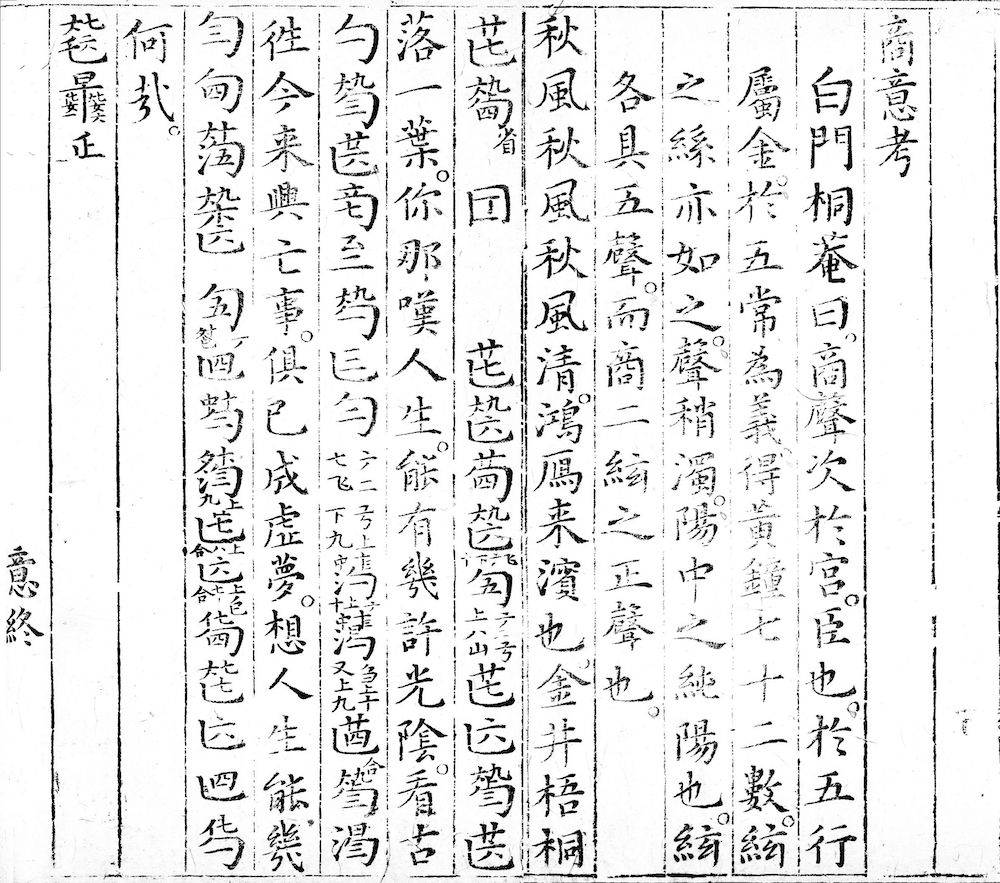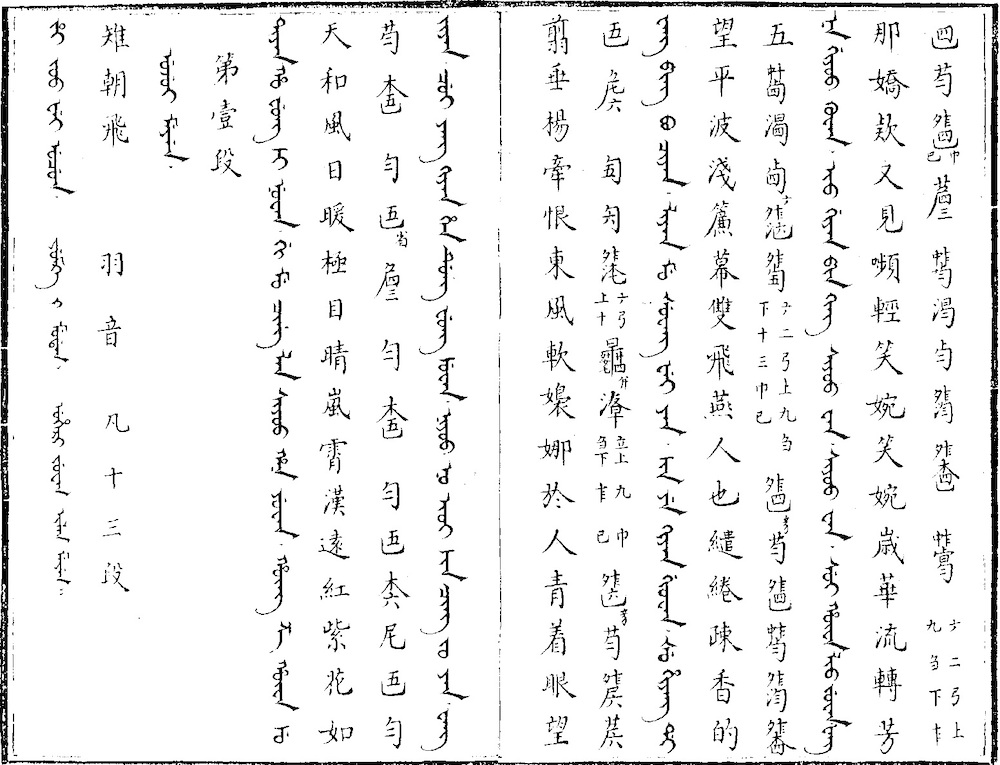Qinpu hebi 琴譜合璧 "Paired jade discs of (i.e., bilingual) zither tablatures", with a length of 18 juan, is a revised version of Yang Lun's 楊掄 (d. 1634) collection Taigu yiyin 太古遺音 "Music from oldest antiquity" from the late Ming period 明 (1368-1644). The editor, the Bannerman Hesu 和素 (1652-1718), was an academician reader-in-waiting (shidu xueshi 侍讀學士) of the Grand Secretariat (neige 內閣).
Hesu admitted that Yang Lun was a master in finger techniques (zhifa wushisan shi 指法五十三式), but argued that Yang only interpreted music from an elitist viewpoint, and forgot that many of the popular pieces originated in the world of the ordinary people. Hesu therefore included high-standing music pieces like Tao Qian's 陶潛 (Tao Yuanming 陶淵明, 365-427) Gui qu lai ci 歸去來辭, Han Yu's 韓愈 (768-824) Ting ying shi qin 聽穎師琴, Ouyang Xiu's 歐陽修 (1007-1072) Xiusheng fu 秋聲賦 or Su Shi's 蘇軾 (Su Dongpo 蘇東坡, 1037-1101) Qian Chibi fu 前赤壁賦, while he decided to only transmit the melodies of popular pieces, without transmitting their song texts.
Yang Lun's original included 34 imaginary pictures of ancient musicians, with the most bizarre feature that he created a portrait of himself, side by side with the connoisseur Zhong Ziqi 鐘子期, who lived in high antiquity.
 |
Tablature of the tune Shang yi kao 商意考, with an introduction on the background of the melody. The tune itself begins with the verse Qiu feng qiu feng qiu feng qing 秋風秋風秋風清. To the left of each text column, the tablature signs can be found. |
 |
Tablature of the tune Zhi zhao fei 雉朝飛 (Manchu transcription Jy joo fei ucun), consisting of 12 parts (duan 段), from the Siku quanshu 四庫全書 edition. It is to be read from left to right, following Manchu writing rules. The tune itself is set in tripartite columns, with Manchu left, Chinese in the middle, and musical signs as playing instructions on the right. |
A book with the title Taigu yiyin "Music transmitted from oldest times", written by Yuan Junzhe 袁均哲, is listed in Jiao Hong's 焦竑 (1540-1620) catalogue Guoshi jingji zhi 國史經籍志, but Yuan's book is lost. It might be that Yang Lun usurped the title or made changes to Yuan's original.
Non-Manchu editions of the Qinpu hebi consist of the parts Taigu yiyin, and Bo Ya xinfa 伯牙心法 "Bo Ya's standards of the mind", mainly in the shape of Yang Lun's Zhenchuan zhengzong qinpu 真傳正宗琴譜.
In his revision, Hesu also added Manchu translations of the Chinese texts, which was quite a special task because rhymes in the Manchu language are different from those in Chinese, but with the same wide range of fitting.
Another book with the title Taigu yiyin was written by Xie Lin 謝琳 (early 16th cent.).